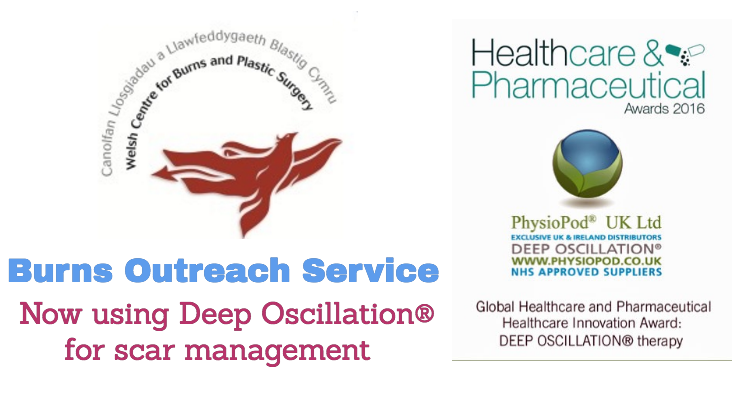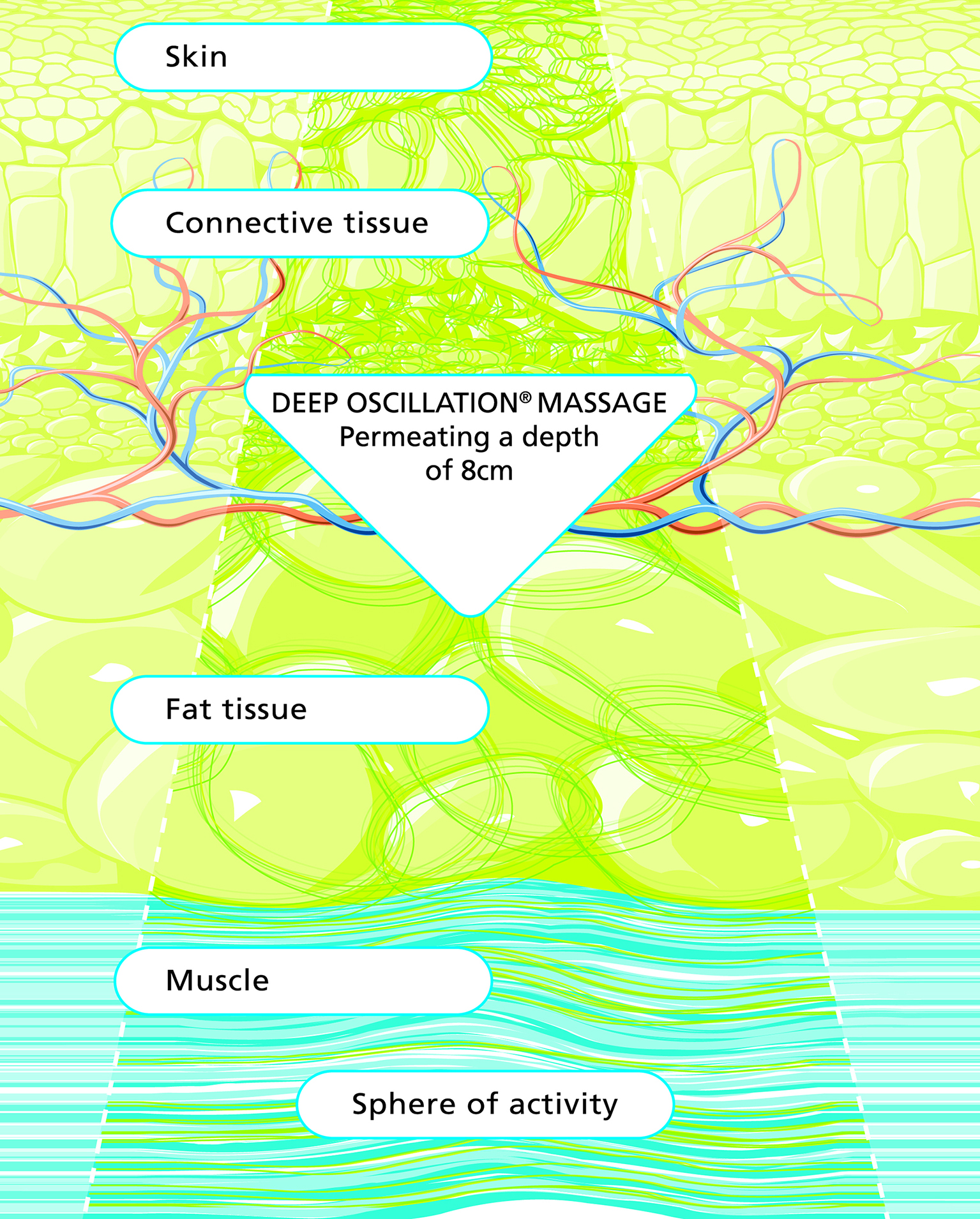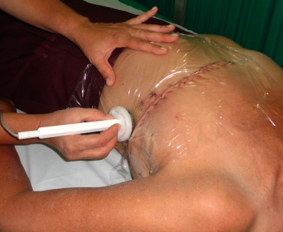Burns Outreach Service Take on Deep Oscillation for Scar Management
Welsh Centre for Burns
Morriston Hospital
Swansea
SA6 6NL.
Read on PressReleasePoint 03.06.2017

Burns Outreach Referrals
Any adult or child that has been seen at the Burns Centre at Morriston Hospital, or has been referred from a burns consultant via their G.P or other hospital.
DEEP OSCILLATION® is already used regularly for the management of Lymphoedema in Welsh Hospitals. PhysioPod™ UK Ltd are delighted to announce that the HIVAMAT® 200, where appropriate will now being used, where appropriate, for scar management
Background
Deep oscillation refers to an electromechanical therapy method in which electrostatic attraction and friction, produced by the use of a glove or hand-held applicator, create resonance vibrations in treated tissue. These have a gentle and deep-acting effect on all tissue components to an 8 cm depth [1].
(1)
Because of the non-invasive, non-traumatic nature of this modality, there are very early possibilities of application: following injury and from Day One post operatively, in acute pain and in wound healing, also.
Since 1991 deep oscillation has been an adjuvant treatment modality from Day One post operatively after mastectomy. © Photo: Tápanez Hernández
Deep oscillation has been successfully applied therapeutically for more than two decades and concomitantly examined scientifically with respect to its tissue effects and clinical results. Currently there exists a substantial number of RCTs, pilot studies, case studies, field reports and studies (several in PubMed-indexed international journals) to provide a medical evidence base for deep oscillation. This article explains well-established clinical effects of deep oscillation and models underlying physiological mechanisms of action, each with references to the relevant literature.
Clinical effects The athermal mechanical mode of action of deep oscillation can induce the following clinically documented effects in treated tissue:
• Strong pain-alleviating potential. This applies to acute traumatic as well as to chronic pain conditions [2-11].
• Anti-inflammatory effect [12, 13].
• Prevention and reduction of secondary and primary lymphoedema, as well as reduction of oedema in lipoedema [2, 4, 6, 14-17].
• Prevention of fibrotic remodelling processes, reduction of fibrosis [2, 14, 15, 18].
• Muscle relaxation, mobilisation, functional improvement and improved ROM [4, 7, 18-20].
• Support of wound healing processes [1, 21, 22].
• Normalisation of haemodynamic parameters of the skin, correction of aesthetic-neurotic problems and influence on biological ageing through preventive effects on premature ageing [23].
• Accelerated recovery after intensive physical workout [24, 25].
• Decongestion and functional improvement in obstructive pulmonary conditions [26, 27].




